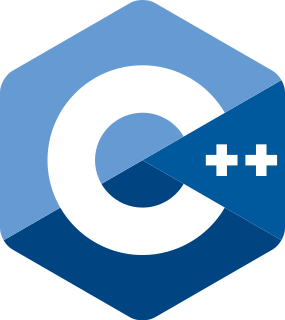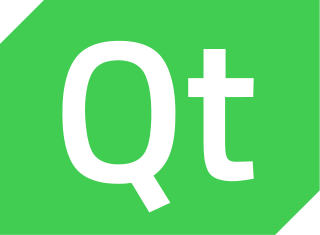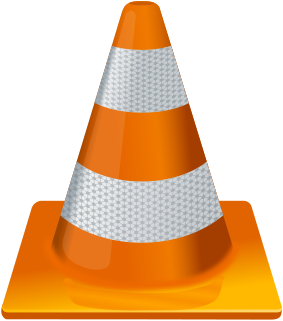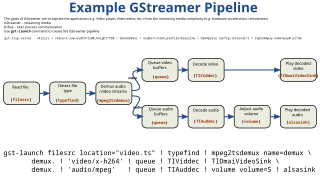The Network-Integrated Multimedia Middleware (NMM) is a flow graph based multimedia framework. NMM allows creating distributed multimedia applications: local and remote multimedia devices or software components can be controlled transparently and integrated into a common multimedia processing flow graph. NMM is implemented in C++, a programming language, and NMM-IDL, an interface description language (IDL). NMM is a set of cross-platform libraries and applications for the operating systems Linux, OS X, Windows, and others. A software development kit (SDK) is also provided.
A multimedia framework is a Software framework that handles media on a computer and through a network. A good multimedia framework offers an intuitive API and a modular architecture to easily add support for new audio, video and container formats and transmission protocols. It is meant to be used by applications such as media players and audio or video editors, but can also be used to build videoconferencing applications, media converters and other multimedia tools. Data is processed among modules automatically, it is unnecessary for app to pass buffers between connected modules one by one.
Distributed computing is a field of computer science that studies distributed systems. A distributed system is a system whose components are located on different networked computers, which communicate and coordinate their actions by passing messages to one another. The components interact with one another in order to achieve a common goal. Three significant characteristics of distributed systems are: concurrency of components, lack of a global clock, and independent failure of components. Examples of distributed systems vary from SOA-based systems to massively multiplayer online games to peer-to-peer applications.

C++ is a general-purpose programming language that was developed by Bjarne Stroustrup as an extension of the C language, or "C with Classes". It has imperative, object-oriented and generic programming features, while also providing facilities for low-level memory manipulation. It is almost always implemented as a compiled language, and many vendors provide C++ compilers, including the Free Software Foundation, Microsoft, Intel, and IBM, so it is available on many platforms.
NMM is released under dual-licensing. The Linux, OS X, and PS3 versions are distributed for free as open-source software under the terms and conditions of the GNU General Public License (GPL). The Windows version is distributed for free as binary version under the terms and conditions of the NMM Non-Commercial License (NMM-NCL). All NMM versions (i.e., for all supported operating systems) are also distributed under a commercial license with full warranty, which allows developing closed-source proprietary software atop NMM.

Open-source software (OSS) is a type of computer software in which source code is released under a license in which the copyright holder grants users the rights to study, change, and distribute the software to anyone and for any purpose. Open-source software may be developed in a collaborative public manner. Open-source software is a prominent example of open collaboration.

The GNU General Public License is a widely-used free software license, which guarantees end users the freedom to run, study, share and modify the software. The license was originally written by Richard Stallman of the Free Software Foundation (FSF) for the GNU Project, and grants the recipients of a computer program the rights of the Free Software Definition. The GPL is a copyleft license, which means that derivative work can only be distributed under the same license terms. This is in distinction to permissive free software licenses, of which the BSD licenses and the MIT License are widely-used examples. GPL was the first copyleft license for general use.
In contract law, a warranty is a promise which is not a condition of the contract or an innominate term: (1) it is a term "not going to the root of the contract", and (2) which only entitles the innocent party to damages if it is breached: ie the warranty is not true or the defaulting party does not perform the contract in accordance with the terms of the warranty. A warranty is not guarantee. It is a mere promise. It may be enforced if it is breached by an award for the legal remedy of damages.

Qt is a free and open-source widget toolkit for creating graphical user interfaces as well as cross-platform applications that run on various software and hardware platforms such as Linux, Windows, macOS, Android or embedded systems with little or no change in the underlying codebase while still being a native application with native capabilities and speed. Qt is currently being developed by The Qt Company, a publicly listed company, and the Qt Project under open-source governance, involving individual developers and organizations working to advance Qt. Qt is available under both commercial licenses and open source GPL 2.0, GPL 3.0, and LGPL 3.0 licenses.
In computing, cross-platform software is computer software that is implemented on multiple computing platforms. Cross-platform software may be divided into two types; one requires individual building or compilation for each platform that it supports, and the other one can be directly run on any platform without special preparation, e.g., software written in an interpreted language or pre-compiled portable bytecode for which the interpreters or run-time packages are common or standard components of all platforms.

VideoLAN is a non-profit organization which develops software for playing video and other media formats. It originally developed two programs for media streaming, VideoLAN Client (VLC) and VideoLAN Server (VLS), but most of the features of VLS have been incorporated into VLC, with the result renamed VLC media player.

wxWidgets is a widget toolkit and tools library for creating graphical user interfaces (GUIs) for cross-platform applications. wxWidgets enables a program's GUI code to compile and run on several computer platforms with minimal or no code changes. A wide choice of compilers and other tools to use with wxWidgets facilitates development of sophisticated applications. wxWidgets supports a comprehensive range of popular operating systems and graphical libraries, both proprietary and free, and is widely deployed in prominent organizations.

VLC media player is a free and open-source, portable, cross-platform media player and streaming media server developed by the VideoLAN project. VLC is available for desktop operating systems and mobile platforms, such as Android, iOS, Tizen, Windows 10 Mobile and Windows Phone. VLC is also available on digital distribution platforms such as Apple's App Store, Google Play and Microsoft Store.
Qt Extended is an application platform for embedded Linux-based mobile computing devices such as personal digital assistants, video projectors and mobile phones. It was developed by Qt Software, a subsidiary of Nokia, and when they cancelled the Qt Extended project, as it was free software, the community created a fork of it, the Qt Extended Improved project, and continued building. The QtMoko Debian-based distribution is the natural successor to these projects as continued by the efforts of the Openmoko community.

GStreamer is a pipeline-based multimedia framework that links together a wide variety of media processing systems to complete complex workflows. For instance, GStreamer can be used to build a system that reads files in one format, processes them, and exports them in another. The formats and processes can be changed in a plug and play fashion.
Free/open-source software – the source availability model used by free and open-source software (FOSS) – and closed source are two approaches to the distribution of software.

LAMP is an archetypal model of web service stacks, named as an acronym of the names of its original four open-source components: the Linux operating system, the Apache HTTP Server, the MySQL relational database management system (RDBMS), and the PHP programming language. The LAMP components are largely interchangeable and not limited to the original selection. As a solution stack, LAMP is suitable for building dynamic web sites and web applications.
The Visual Component Framework (VCF) is an abandoned open source project for development under Microsoft Windows and Apple Macintosh that is distributed under the BSD license. It is an advanced C++ application framework that makes it easier to produce GUI-based C++ applications. The framework is C++ design and has built in support for rapid application development. The framework is designed to be portable over multiple platforms and compilers.

Miro was an audio, video player and Internet television application developed by the Participatory Culture Foundation. It runs on Microsoft Windows, macOS, FreeBSD and Linux and supports most known video file formats. It offers both audio and video, some in HD quality.
License compatibility is a legal framework that allows for pieces of software with different software licenses to be distributed together. The need for such a framework arises because the different licenses can contain contradictory requirements, rendering it impossible to legally combine source code from separately-licensed software in order to create and publish a new program.
The ROSE compiler framework, developed at Lawrence Livermore National Laboratory (LLNL), is an open-source software compiler infrastructure to generate source-to-source analyzers and translators for multiple source languages including C, C++, Fortran, OpenMP, Java, Python, and PHP.

Mono is a free and open-source project to create an Ecma standard-compliant .NET Framework-compatible software framework, including a C# compiler and a Common Language Runtime. Originally by Ximian, it was later acquired by Novell, and is now being led by Xamarin, a subsidiary of Microsoft and the .NET Foundation. The stated purpose of Mono is not only to be able to run Microsoft .NET applications cross-platform, but also to bring better development tools to Linux developers. Mono can be run on many software systems including Android, most Linux distributions, BSD, macOS, Windows, Solaris, and even some game consoles such as PlayStation 3, Wii, and Xbox 360.









